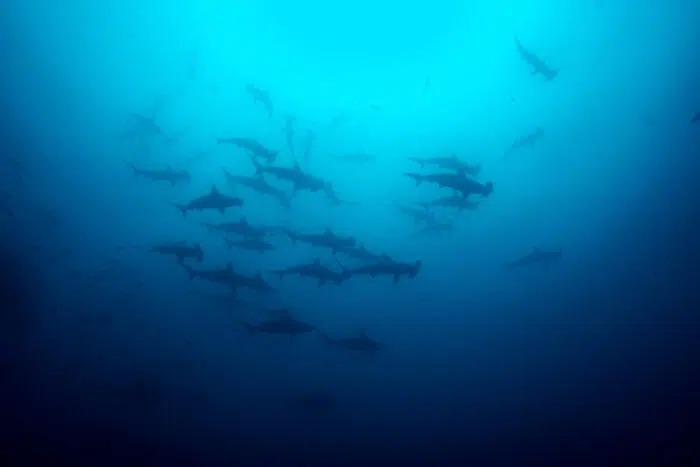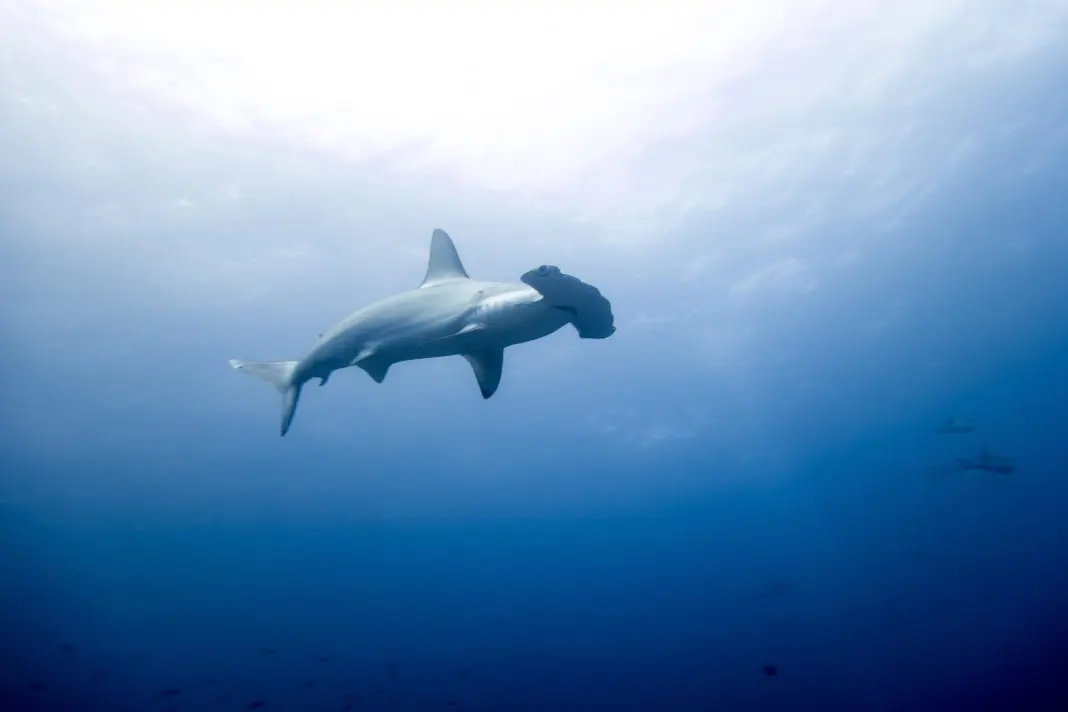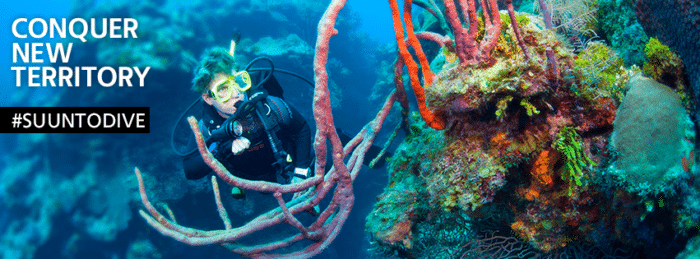Scuba Diving in Costa Rica is part of our Top Dive Sites of the World
It is no surprise that with a coast in the Caribbean and one on the Pacific Ocean, scuba diving in Costa Rica is some of the best in the world. Costa Rica is home to one of the world’s best destinations for diving with hammerhead sharks, Cocos Island.
Meaning the “Rich Coast,” the waters off Costa Rica are rich with a wide range of marine life. Whether you want to see pristine coral or manta rays, bull sharks, and hammerheads, there is something for every diver in the waters off Costa Rica.
You can go scuba diving in Costa Rica year-round. Although the calmest conditions are between August-December when there is little rain, conditions are at their calmest. At the same time, most of the big stuff is missing during this time, a host of other creatures replaces it, and the calmer conditions make it the ideal time to visit for relatively inexperienced divers.
From May to November, you can get some rain, and large nutrient-rich swells bring the big pelagic to the waters off Costa Rica. During this window, experienced divers who don’t mind the more challenging conditions can experience bull sharks and other pelagics across Costa Rica, including hammerheads at Cocos island.
Location
Cano Island
Although it is lesser known than the jewel in the crown of Costa Rican diving Cocos Island, Cano Island offers some world-class diving in its own right and is worth adding to any scuba diving in Costa Rica itinerary.
The small island measuring around 740 acres lies a mere 10miles/16 km off the Osa Peninsula. The reefs at Cano Island are stunning and are home to a wide range of marine life and large pelagics. Sharks are abundant in the waters of Cano, and divers can regularly encounter whale sharks, bull sharks, and even white tip reef sharks. Also, whales are found in the waters of Cano, with Pilot, Sei, Humpback, and false killer whales were regularly seen. If all that is not enough, there is more! Cano dive sites are teeming with huge schools of fish, jacks, rays, and if you are lucky, diver the odd dolphin or two.
There are several ways to dive Cano Island and all the dive sites it features. While some day trips to dive the island, most divers opt to dive Cano Island via liveaboard. The season is relatively short, lasting six months, from January to June. During this time, the conditions are warmer, dryer, and ideal for diving. During the diving summer season, the water temperature is balmy, varying from 72F/22C to 82F/28°C.
Gandoca Manzanillo Wildlife Refuge
While most of the best diving in Costa Rican water lies off the pacific coast, scuba diving in Costa Rica would not be complete without diving on the Caribbean coast at the Gandoca Manzanillo Wildlife Refuge.
The wildlife refuge is about much more than diving and provides an exceptional experience with flora and fauna both above and below the water. The reefs at the reserve are in pristine conditions and host some of the best coral reefs in Costa Rica. Diving the Gandoca Manzanillo reefs, there are lots of shrimps, sponges, lobsters, and thousands of reef fish that cover the reefs. The mangroves in eh area provide a home for crocodiles and manatees, and if you are a very fortunate diver, you may have the chance to see a manatee in the water.
On land, there is even more wildlife to see and experience. The animal and birdlife are extraordinary, with tapir, sloths, monkeys, pumas, and jaguars, as well as kingfishers, trogons, and keel-billed toucans. The reserve is home to an astounding number of birds with over 360 species. If you are lucky, you may glimpse the critically endangered harpy eagle.
The beaches at the Gandoca Manzanillo refuge are also full of action as they are an active nesting site for leatherback turtles. From March to July each year, thousands of these majestic creatures can be seen emerging from the sea at night to lay their eggs on the beach. If you want to catch the laying season, then the best time to visit is from April to May, when the leatherbacks are at their busiest. The hatchlings start emerging in May each year.
Bat Island
Bat Island diving is famous for big sharks, specifically bull sharks; if you want to see bulls when scuba diving in Costa Rica, then Bat Island is an absolute must! Conditions at Bat island are tough, with strong currents bringing nutrient-rich waters with fish and big sharks in tow. This makes diving on Bat Island only possible for experienced divers.
Generally, the best time to visit Bat Island is between May and November. During this period, the air temperature is pleasant and warm, regularly above 85F/29C. Visibility at Bat island can be variable and range from 30ft/9m to 100ft/30m. visibility tends to be reduced due to plankton in the water. This brings with it a new majestic visitor. Aside from bull sharks, Bat Island is also known for visits from Pacific Giant mantas, the largest species of manta in the world. Seeing these amazing giants with a wingspan that reaches 29ft/8.8m across is a truly breathtaking experience.
Bat Island’s most well-known dive site is known as “the big scare” for the conditions and the big bulls that visit. While some local legends tend to exaggerate the size of the bull sharks that can be encountered in the area, they are nevertheless enormous specimens. The bulls you will see at Bat island tend to be at the species’ upper limits, making them an awe-inspiring sight underwater.
Hammerhead Scuba Diving in Costa Rica: Cocos Island
Cocos Island and hammerheads are almost synonymous with scuba diving in Costa Rica. A quick search about scuba in Costa Rica and a lot of the results will focus on the Cocos islands, arguably one of the best places in the world to dive with sharks, although one of the best places to encounter schooling hammerheads in the world.

The small island measures 5mi/8km by 2mi/3km and lies deep in the Pacific Ocean, approximately 342 mi/ 550km southwest of Costa Rica’s mainland. Generally, diving depth ranges from 30ft/10m to 131ft/40m. visibility varies but typically remains between 30ft/10m to 50ft/15m.
The stars of the show at Cocos Island are the enormous schools of hammerhead sharks. A typical dive at Cocos involves dropping down and finding a rock to hide behind. At his point, divers try and find a hammerhead cleaning station to observe the sharks approaching to be serviced. One thing to remember is if you try an approach the sharks, they will retreat rapidly. The best strategy for close passes is to hover, control your breathing, and time your bubbles to not scare the hammerheads away. This strategy will ultimately yield close encounters and pass bees.
While the coral at Cocos Island is not pretty, the marine life is outstanding. Aside from the hammerheads, you can encounter a range of big fauna, including dolphins, manta rays, tiger sharks, and even the odd killer whale. Needless to say, the water is also rich with jacks, tuna, wahoo, and turtles. Lucky divers may also see whale sharks, which are known to pass by.
Due to the conditions and travel involved, trips to Cocos Island are ideally only suited to experienced divers comfortable in strong currents and blue water. A typical day involves three dives making Nitrox your gas of choice when scuba diving Cocos Island.
Click here for more Top Dive Sites of the World
Brought To You By
Our Top Dive Sites of the World guide is brought to you by Suunto. We recommend that you use a Suunto Dive Computer when scuba diving or freediving at one of these dive sites. Suunto is the world’s leading dive computer designer and manufacturer providing diving instruments for recreational, technical, and freediving. You can find out more at Suunto.com.


